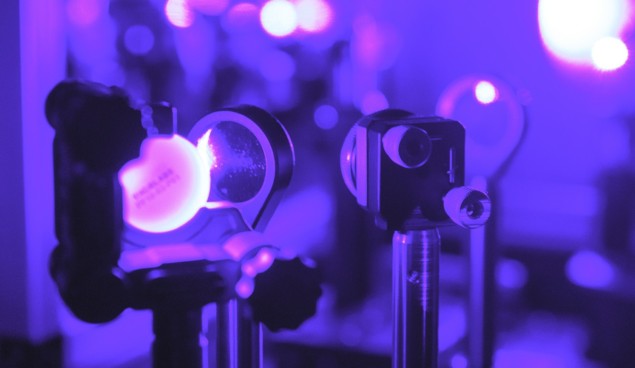Multiple excitons make a surprise appearance in 2D hybrid perovskites
22 Jan 2019 Alex Petkov
Semiconductor devices based on hybrid organic–inorganic perovskites (HIOPs) are growing in popularity due to their potential applications in efficient light-emitting diodes, solar cells, lasers, and more. These hybrid materials are soft and flexible, and are much easier to fabricate in the bulk than comparable semiconductors. As a result, thin films of HIOPs could even be used for future electronic devices that could be painted onto a surface.
Particular interest has focused on 2D metal halide HIOPs, since they have been shown to host high-energy excitons – typically hundreds of meV. Now, an international team led by researchers from the Georgia Institute of Technology, US, has made the surprising discovery that multiple excitons with distinct properties can coexist in these hybrid materials. This finding could open up a range of novel device applications, but also raises many questions about the mechanisms that give rise to this phenomenon.
Excitons are quasiparticle excitations that have no net charge but can transport energy. “Using the standard formalism,” comments team member Srinivasa Srimath from the Istituto di Tecnologia in Milan, Italy, “ the coexistence of multiple excitons cannot be predicted.” Srimath explains that the main focus of the research was to investigate how excitons are affected by the lattice, and the team was surprised to find that that distinct excitons can exist in the same material.
Scientists usually turn to Raman spectroscopy to probe the vibrational spectrum of materials. But HIOPs generate a rich photoluminescent response, which makes the weaker Raman signal difficult to isolate. To overcome this obstacle, the researchers exploited ultrashort light pulses, a variation of the method that is known as resonant impulsive stimulated Raman spectroscopy (RIRS).Two single-layer hybrids of lead iodide were considered, (PEA)2PbI4 and (NBT)2PbI4, where PEA is phenylethyl ammonium and NBT is n-butylammonium. The organic component is usually host to high-frequency vibrations, or phonons, whereas lower frequencies should dominate in the inorganic part of the materials. This suggests that there should be a sharp change in the vibrational spectrum at the boundary between the materials, which in turn implies that the electronic properties of 2D HIOPs should be heavily influenced by phonons.
Using RIRS, the researchers found a set of coexisting excitons that couple to the lattice in different ways. Some are coupled to vibrations in the crystal plane, while others to out-of-plane motion – which results in excitons that could be useful for novel laser designs.
Although the researchers have confirmed the coexistence of excitons with vastly different properties, it is not clear which type of quasiparticle would be excited in the material at any given time. However, notes Srimath, that remains an active line of enquiry. “To some degree the nature of these excitons seems to depend on the choice of the organic cation,” he comments. Changing the organic cation used could affect the relative intensities of the excitonic peaks, which would make it possible to design materials that tune in or out specific excitonic responses. With the growing interest in the field of 2D HIOPs, these highly tunable electronic devices may soon become reality.
The full results are reported in Nature Materials.

25/1/2019 from physicsworld.com

Δεν υπάρχουν σχόλια:
Δημοσίευση σχολίου